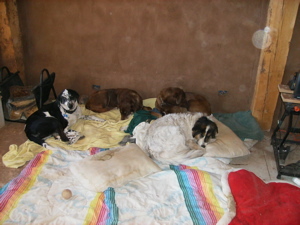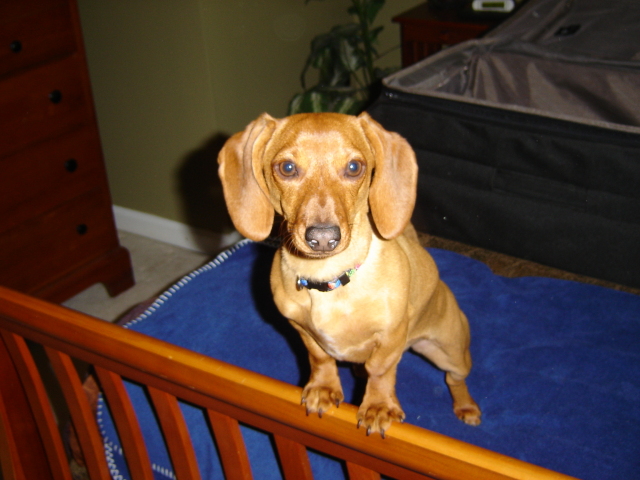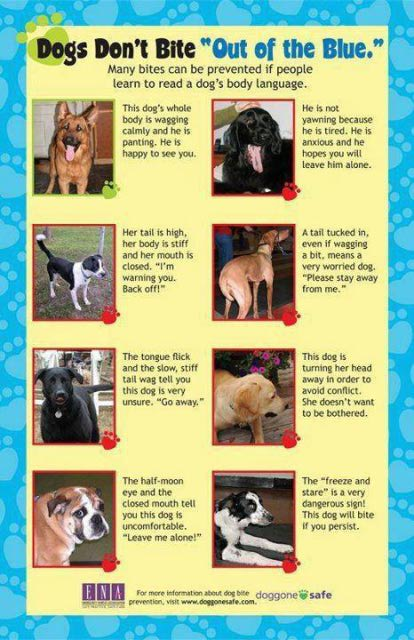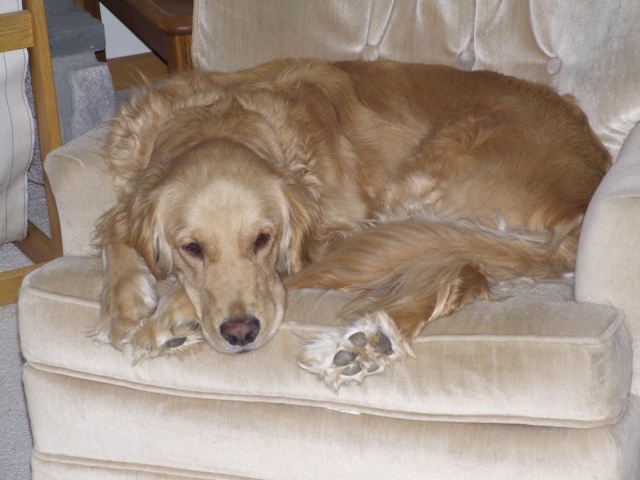QuestionWe have a three and half year old staff/jack russell. last week we took on a 5 month old puppy from a rescue centre. We were told he was a staff cross, but we are fairly convinced he's boxer cross as hes very leggy and skinny. the new puppy was fostered from 9wks to current by one of the rescue staff members as he's very quiet/ sensitive for a pup.
the 'problem' we seem to be having is whilst they walk fine together outside, when at home together our three year old wants to play with the pup. this involves the normal front legs down stance, sometimes barking at the pup and lots of nibbling on the pups neck. eventually the pup tries to play back but keeps jumping on our older dog and what appears to be biting not nipping. the pup keeps pinning the older dog and biting to the point that the older dog is yelping and the pup doesn't always let go. also the older dog doesn't seem to want to lie down near the pup. everytime he comes over to her shes moves and sometimes growls but then tries to play again, which results in the biting again. When the pup tries to sleep shes doesn't want to let him.will this eventually settle or should we be intervening when this play is going on?
Any advice appreciated
AnswerAllowing that puppy to be fostered without absolutely insuring that the puppy would be socialized heavily to other dogs, people, environments, was a HUGE ERROR on the part of this 'rescue' organization. The window of opportunity has slammed shut and you are now left with the work of rehabilitation. Having done a great deal of pro bono work for legitimate no-kill rescue sanctuaries and such groups, I can guaranty that even though a puppy appears very 'soft' and 'fearful' (at age 8 to 10 weeks approximately, all dogs undergo a fear phase, and you cannot determine adult temperament from a pup at 9 weeks of age) the mandate to heavily socialize is ABSOLUTE. No puppy should be removed to foster care that doesn't involve other dogs and pups its own age (if possible). This pup did not learn from its littermates that teeth hurt and is not responding to your older dog's clear signals of pain (the ability to acquire bite inhibition between dogs ends at approximately 16 weeks); the pup is not responding to play bow appropriately and may not be interacting playfully, but rather out of confusion and fear. I can't see that from here. In other words, your puppy doesn't appear to know how to be a "dog", does not recognize clear communication from another dog, and may be afraid. Your older dog is making a clear statement of rank by refusing to allow the puppy to freely approach (this is common behavior in an adult) and is attempting to make sense of this pup by engaging him in play (which is a test of strength, a rank related behavior, a social behavior and pack related interaction). She needs to be protected from his inability to respond appropriately.
Put a house tab on this dog (lightweight nylon leash); begin positive reinforcement training with him immediately and teach him a simple "sit" (but use a unique word); you can use a play object such as a squeak toy as a reward, intermittent with food treat (random food reward accelerates learning and the toy can be used to redirect his attention when he is getting too rough with your older dog.) Make him work for meals and attention for about a week then play bow to him and interact with a toy, but stop immediately if he begins to growl and do not allow him to keep the toy at the end of the game (which shouldn't last more than a few minutes.) Dogs DO recognize the play bow offered them by humans; you will in effect be teaching him and you can include your other dog in these games, or play with her in sight of the puppy, as dogs learn from observing one another. When he gets too rough with your older dog, interfere with a "nah!" and remove him with the leash (not your hands on him) for a short (ten second) time out, but refrain from "comforting" the older dog or even addressing her, as she may construe this incorrectly and develop a problem with the pup other than the one she already appears to have.
This will all most likely work out very well between your dogs; your job is to attempt to introduce this new pup to other dogs, people, places, etc., while closely observing his reactions in order to not push too hard and not reward fear. Equipping him with trained behaviors will increase his confidence and also his trust in you.

 Sudden aggression within pack after a death
Question
Sudden aggression in o
We have an approximatel
Sudden aggression within pack after a death
Question
Sudden aggression in o
We have an approximatel
 Post bladder surgery potty training for INDOORS!
QuestionTiki
QUESTION: Dear Dr. Connor,
My 10 ye
Post bladder surgery potty training for INDOORS!
QuestionTiki
QUESTION: Dear Dr. Connor,
My 10 ye
 Mini Daschund with anxiety issues
QuestionAbigayle
QUESTION: I have a 3 1/2 yr old
Mini Daschund with anxiety issues
QuestionAbigayle
QUESTION: I have a 3 1/2 yr old
 Is this aggression, dominance, or play?
QuestionQUESTION: I have a question regarding doggy beh
Is this aggression, dominance, or play?
QuestionQUESTION: I have a question regarding doggy beh
 aggression in aging dog
Question
Niko
I have a thirteen year old, female, Samoy
aggression in aging dog
Question
Niko
I have a thirteen year old, female, Samoy